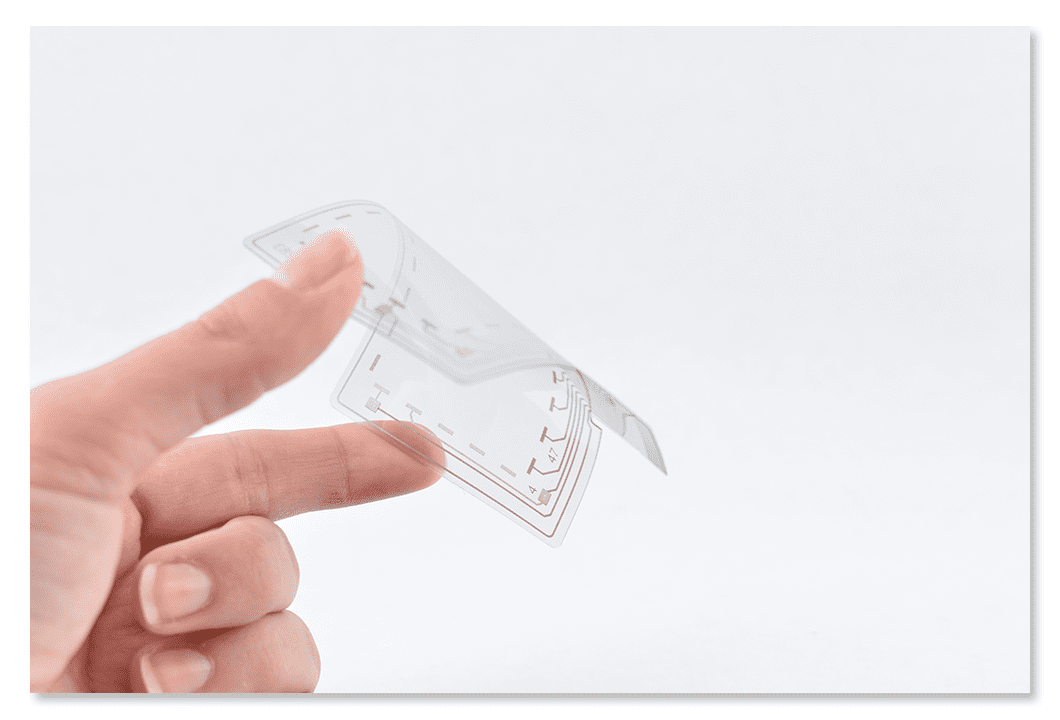When people hear about flexible circuits, it often leads to a follow up question: “can conductive ink be stretched?” There is a difference between “flexibility” and “stretching”.
Flexibility means the inks can be placed in tension and continue to provide electrical continuity.
Think of the following scenario of bending a sensor tail around your finger:
- IF the ink is printed on the top surface of the tail and you wrap the tail around your finger the ink is placed in tension.
As long as the bend radius is not too small the ink maintains electrical continuity because of its flexibility, i.e. there is enough silver flake in the resin to keep the flakes from being pulled apart (separated) from one another.
A small radius or bend will actually tear or fracture the ink – too much tension.
- IF the ink is printed on the bottom surface of the tail and you wrap the tail around your find the ink is places in compression.
No issues here as the silver flakes pushed or pressed closer together. The tighter the radius the better.
In this scenario you can actually crease the tail and maintain electrical continuity.

Stretching means that in certain scenarios the conductive silver ink, and the substrate it is deposited on, are temporarily altered. One example of this is spandex. It can be stretched to extremes during a workout but always returns to its original size. There are companies working on this.
This holds true for both projected capacitive sensors as well as membrane switches – both use conductive inks printed on flexible substrates.
Projected capacitive sensors:
Curved surfaces used to be unachievable for touch sensors when ITO (indium tin oxide) was the solution – ITO, being a metal, is not flexible and is considered brittle. PEDOT is a cost effective alternative to ITO and is flexible, very flexible. PEDOT maintains its adhesion to the substrate and all conductive properties when flexed, so the manufacturing of a finished assembly is easier than with the brittle conductive material, ITO.
Membrane switches:
One instance where people wonder about ink “stretching” is in the context of forming the ink. Forming can be very basic embossing. Circuitry inks should hold up to a gradual emboss like a “pillow emboss” but may have a difficult time functioning with a “rim emboss” (hard 90 degree angle).
In mold decorating or IMD is another type of forming. The IMD process would certainly call for the inks to have stretch or elongation properties to them.
Still interested in learning more? Reach out!
